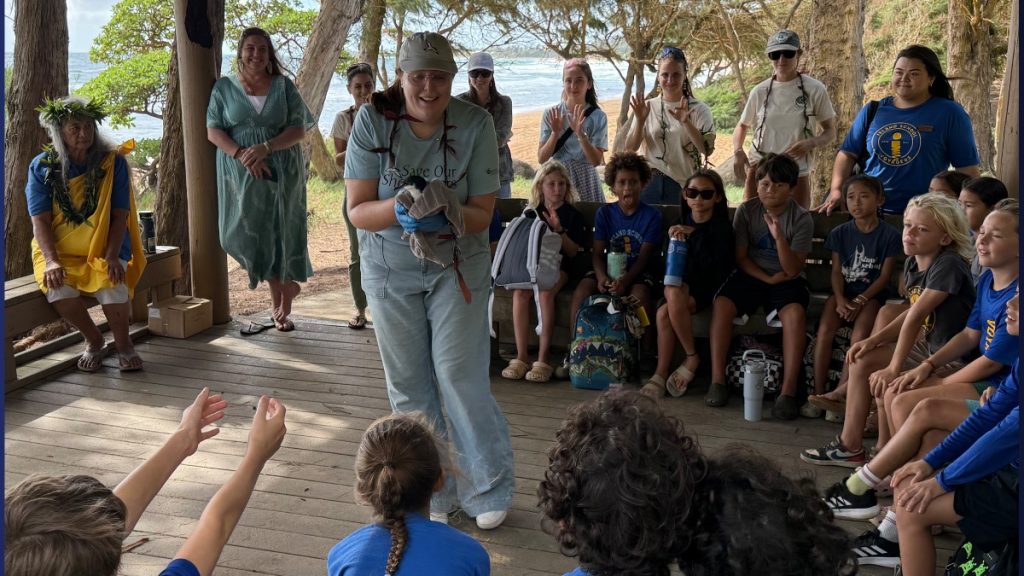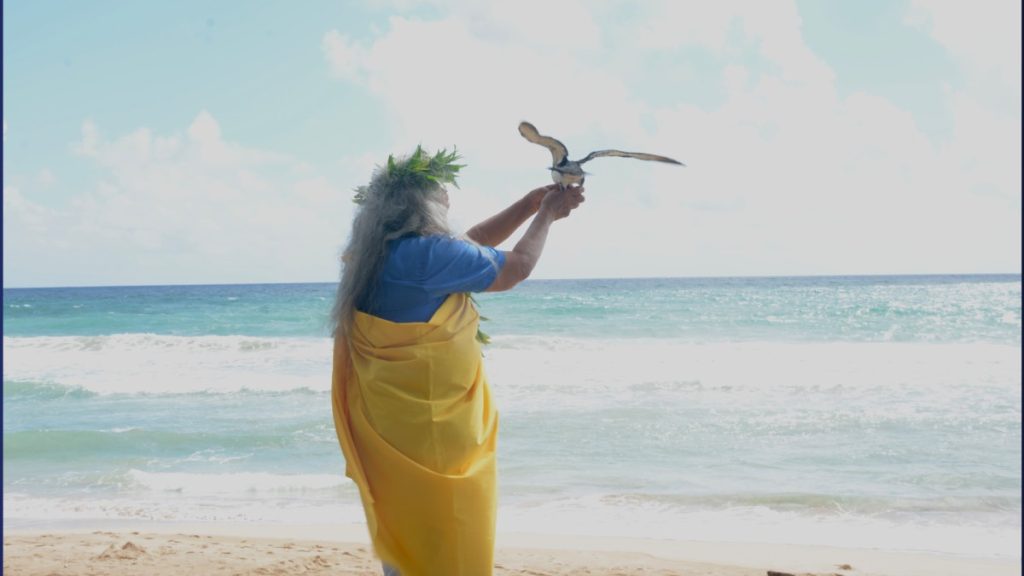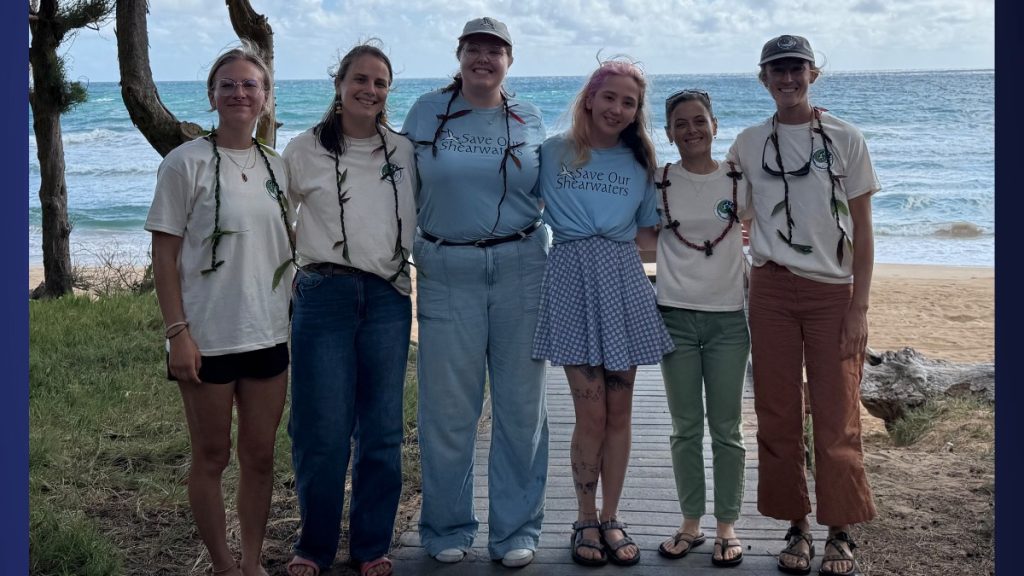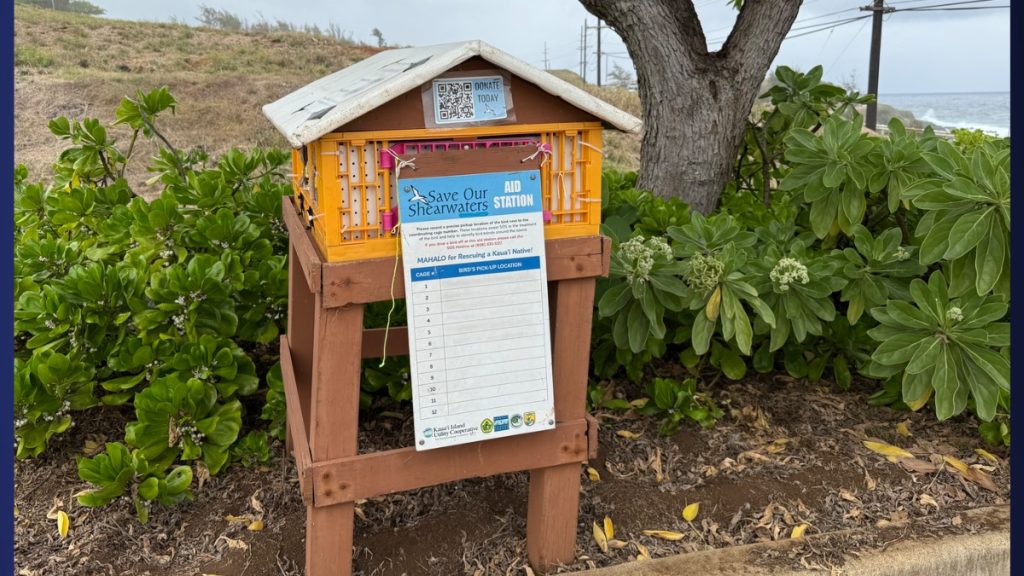First three Newell’s shearwaters take flight after rescue from groundings on Kauaʻi

As the trade winds swept from the east on Thursday, three threatened Newell’s Shearwaters were released back into the wild after being found grounded days earlier during this year’s fledgling season.
The annual release — organized by the Kauaʻi Endangered Seabird Recovery Project in collaboration with the Save Our Shearwaters Program — provides an opportunity for community members and students to learn about the seabirds and their connection to Hawaiian culture.
“These three birds are out of 15 birds that we’ve rescued during this fledgling season,” said Jacqueline Nelson, senior program manager at Save Our Shearwaters.
Fledgling season is when young birds leave the nest to learn to fly and forage.
The Newell’s shearwater, known as ‘a‘o in Ōlelo Hawaiʻi, is the most commonly grounded seabird during “fallout” season. This is when artificial lights can confuse birds trying to follow the moonlight to the ocean, causing them to circle until they are exhausted, crash or fall to the ground, making them vulnerable to predators, vehicles and other hazards.
The rescued birds were downed by artificial lighting during their first flights from inland burrows within the last seven days, Nelson said.
The release of the birds, called the 2025 E Hoʻopomaikaʻo Ia Na ManuʻAʻo ʻAʻo, was held at Lydgate Park. In attendance were residents, children from Kapa’a Middle School and Island School, members of the Kaua’i County Council, and the Department of Land and Natural Resources Division of Forestry and Wildlife.

The released birds are only a few months old and have no serious injuries.
“These guys are pretty healthy, maybe just a little bit dehydrated and needed a meal or two,” Nelson said.
The species can be easily distinguished by its “formal wear” of black and white plumage, dark bill, and pink legs with black wedged toes.
With the blessing of cultural practitioner Kumu Sabra Kauka, the first bird was released.
Michael Mitchell, a board member of the Hanalei Watershed Hui, and Kauaʻi County Council Member Fern Holland released the last two seabirds as the children applauded.
“Cool, cool, cool,” yelled a student from Kapa’a Middle School, while another middle schooler said: “Have a safe journey.”
“It was so cool to see them flying near the ocean, said Joseph Horn from Island School. “If we see a bird on the floor, we both know what to do and help it.”
Dilek Sahin, project coordinator at the Kauaʻi Endangered Seabird Recovery Project, was all smiles after the successful release: “Children don’t need to be on a conservation team to recognize the ʻaʻo bird. These types of events help spread awareness, so now, when they spot a bird on the ground while driving with their parents, they can say, ‘Oh, I know this is an endangered seabird’—and then we can rescue it.”
“And that is a big win for us,” added Sahin, “because saving these birds is an island-wide community effort.”
This year, mid-October — the peak fledgling season — overlaps with a small moon phase, increasing the risk for the threatened seabirds.
After looking at the data and the weather with the moon phase, Dr. Andre Raine, science director at the Archipelago Research and Conservation in Kalaheo, predicted that October was “not going to be a good season” for the birds.
“This is really critical,” Raine said. “We have to look at the time of year, and figure out if it’s a full moon, or a waxing or waning moon, or a new moon.”
“As the peak period approaches, the waning moon, combined with changing weather, will be a contributing factor.”
For example, on stormy and gusty nights, “the weather dampens the moonlight, making everything glow,” Raine said. “You might think the birds will have a safe night, but it can quickly turn into a really bad one.”
The new moon on Oct. 21 will mark an especially critical period for the threatened bird species.

The all-wahine team with Save Our Shearwaters and the Kauaʻi Endangered Seabird Recovery Project urged all island residents and visitors to remain alert and watch for any downed birds encountered in the coming weeks.
“It is more important than ever now that everyone in the community keep their dogs on a leash even at the park, dim their patio or shut their lights so that the birds have a higher chance of making their journey,” Nelson said.
Sahin added: “We want everyone to pay attention after sunset or before sunrise, especially those individuals driving before sunrise. If they see black-and-white birds on the ground, they need to stop and, if they can, help rescue the birds.”
Residents who encounter a downed bird can drop it off at 10 designated fire stations across the island, which serve as bird aid stations.
Afterward, staff from the Save Our Shearwaters collect all birds left at the aid stations and transport them back to their facility. They rehydrate them if necessary, then release them.
Protecting the Newell’s Shearwater on the Garden isle is vital to the species’ survival, as Kauaʻi is home to 90% of the remaining population.
Residents with concerns or complaints about artificial lighting can contact the Department of Land and Natural Resources Division of Forestry and Wildlife at 808-274-3433 or click here.
Businesses can do their part by dimming or shielding lights at night and reporting any downed seabirds to the Shearwater Hotline at 808-635-5117.




